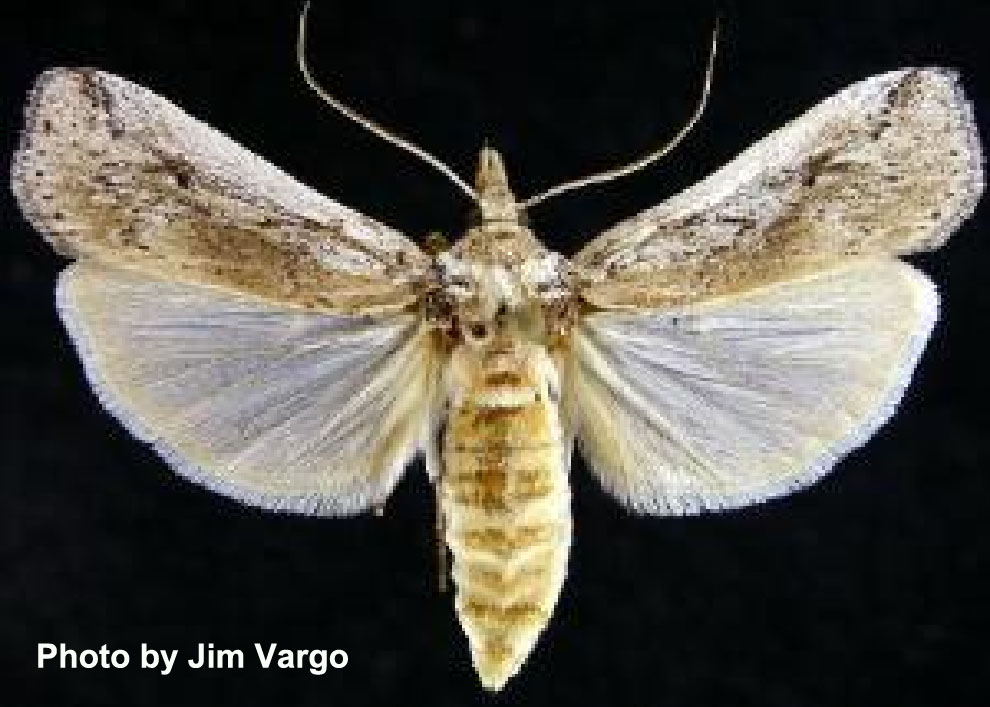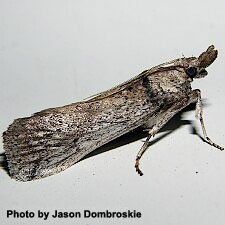Melitara dentata (Grote)
Synonymy and Types
Zophodia dentata Grote, 1876, Can. Ent., 8: 158. Type locality: Clear Creek Canyon, Colorado.
Type deposition: The Natural History Museum (BMNH), London.
Diagnosis
Adult
The strongly dentate condition of the postmedial line is a useful feature to identify the species; however, M. doddalis and M. texana have similar strongly dentate postmedial lines. Melitara doddalis has a forewing with extensive dark-brown or black suffusions in the posterior half, in contrast to M. dentata and M. texana. Melitara texana is restricted to southern Texas and northern Mexico, and has the vinculum less than ½ as long as its greatest width and a corpus bursae that is shorter than the ductus bursae. In contrast, M. dentata occurs from northwestern Texas and northern Arizona to Alberta, and this species has the vinculum about as long as its greatest width and a corpus bursae that is longer than the ductus bursae (Neunzig, 1997).
Larva
Based on previous descriptions (Kellogg, 1892; Heinrich (1939, 1956), the larva of M. dentata is similar to that of M. prodenialis.
Distribution
This species occurs from southeastern Alberta south to northern Arizona and east to the panhandle of Texas (Neunzig, 1997).
Life History and Larval Hosts
Life History:
The ovipositional behavior of the female and the behavior of the larva are similar to those in M. prodenialis with the following differences. The egg-stick of M. dentata generally contains more eggs (average 35) than that of M. prodenialis (although this difference may be negated by current research on M. prodenialis). Larvae are less gregarious than M. prodenialis, and form smaller groups, sometimes with only 2-3 final instar larvae in a cladode. Pupation occurs in the silk cases that are more robust and more densely woven than M. prodenialis. The species has one generation each year (Neunzig, 1997).
.
Hosts: Opuntia fragilis (Nuttall), O. macrorhiza Engelmann, O.polyacantha Haworth.
References
Grote (1876), Heinrich (1939, 1956), Neunzig (199



